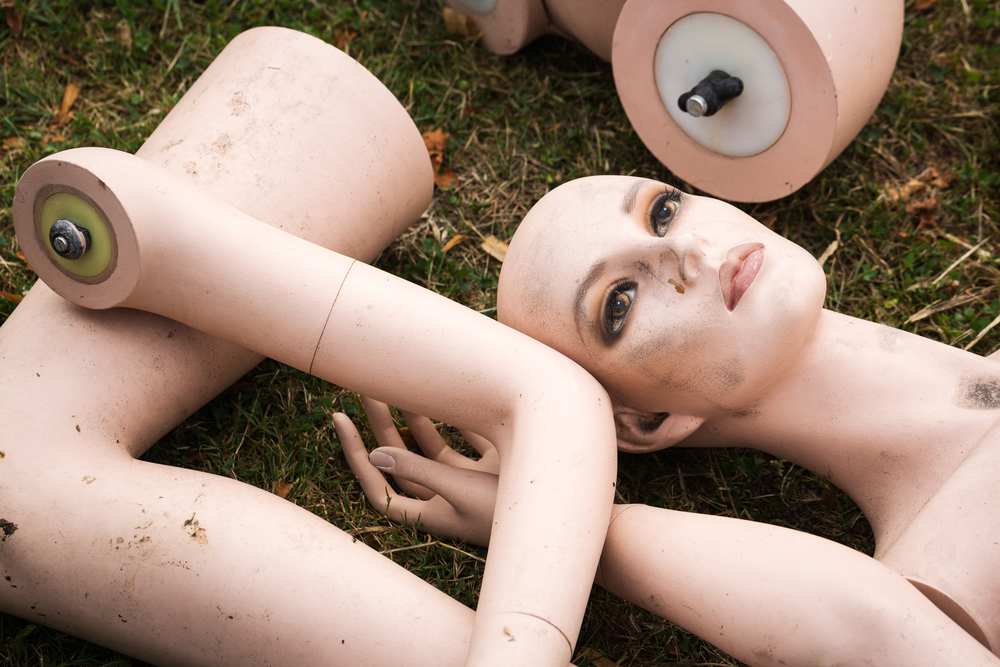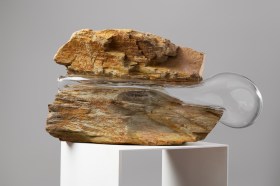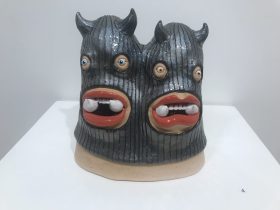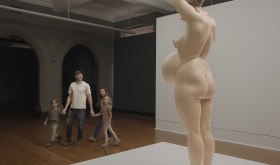In recent weeks, there have been a number of high-profile reports of damage to artworks during social events – the most splashy, in media circles, being the toppling of a $62,000 (US$42,000) Jeff Koons sculpture during the Miami art fairs. While in Australia, it was a topple of an art-goer rather, which saw some damage to an installation by South Korean artist, Do Ho Suh at the Museum of Contemporary Art Australia (MCA), within days of the exhibition’s closing (26 February 2023).
Simply, damage happens. It has always happened. But as Cédric Boero told CNN: ‘That is why the artwork was covered by insurance.’ Boero is the District Manager of Art Wynwood, the gallery displaying Koons’ sculpture in Miami, and an official representative for Koons’ balloon dog sculptures.
While the kind of hysterical media hype around such incidents is unfavourable, damage, more generally, is one of those topics that is little spoken of, or shied away from altogether. This was reiterated by a sweep of organisations ArtsHub approached for this article, all of which replied with short, blanket statements, along the lines of ‘we take the utmost care to avoid damage and protocols are in place… blah blah blah’.
Openly discussing such situations, however, can only help improve sector-wide management of such events, when they inevitably occur.
Action versus (re)action
Both the Koons and Do Ho Suh damage occurred during social events – yes, related to the (not so) new reality that galleries today are more than storage vessels for artworks. Part of the deal, when securing sponsor dollars, is the opportunity for those exclusive experiences with the art!
Exclusive, however, doesn’t mean exceptional. The rules need to continue to apply. Boero explains: ‘It was the opening cocktails, lots of people were in our booth, [the collector] gave unintentionally a little kick in the pedestal, which was enough to cause the sculpture to fall down.’
In the case of the MCA, in a formal statement the gallery said the visitor, ‘accidentally stumbled, which impacted an installation on display’, adding that, ‘Museum protocol was followed, and no one was hurt. The work was assessed by a conservator before the gallery space reopened to the public.’
Hype is not helpful. ‘A Drunk Partygoer at a Sydney Museum Event…’ and ‘Whoops! A Clumsy Art Fair Visitor…’ were a couple of the headlines reporting the recent events. Indeed, the Koons breakage went viral on social media, with questions posed as to why the object wasn’t properly secured in the first instance, and whether it was an act (aka Banksy’s auction shredding) to boost the value of the work.
‘Some collectors offered to buy the shards. We are still receiving offers as we speak,’ Boero told Artnet. It’s surprising the video footage is not already an NFT. Has our world gone totally mad?
I still marvel at the intensity of the crowds jammed into Sydney Modern for its opening party. The question is getting the balance right, so that you can still get the clicks through the doors and the dollars in the coffers without risk – both to the artworks and institutional integrity.
Read: Dealing with disrespect
Safe-guarding the art must always come first
As arts managers, we all recognise the value of venue hire and sponsors’ events – a much needed reality in an ever-increasing tight financial landscape. How can these be better managed? Are only certain galleries available for events? Should more security be on staff? Should a registrar or conservator be on hand for some events? Should it be part of the loan contract, so that lenders sign off on event placement and acknowledge any potential risk? Do food and beverage stations need to be moved altogether, to non-art or pedestrian zones within the gallery?
An Art Gallery of NSW spokesperson says the Gallery, ‘hosts hundreds of events and programs each year’, but that it has ‘strict protocols in place and takes very seriously its responsibility to manage and safeguard the Collection while ensuring its accessibility for visitors’.
This was echoed by the MCA: ‘The care of artworks is of the utmost importance to MCA Australia. Accidents do happen in museums and galleries, which is why all institutions have clear procedures for these situations.’
When pushed on what those clear procedures may be, or advice to colleagues on handling such incidents, both galleries – along with a number of other sources ArtsHub approached – offered no further comment.
Barry Keldoulis, CEO and Fair Director of Sydney Contemporary, says that he doesn’t recall any incidents over the history of the art fair where a visitor has damaged a work. ‘That may be because gallerists are acutely aware of the possibility and are ever-vigilant. When I had my gallery and did fairs, I always kept an eye on people with backpacks who seemed to be often unaware that their physical presence extended backwards for some distance and could easily swing around and, in doing so, scrape the backpack across a painting. I rue the day when the fashion went from clutch bags to huge handbags slung over the shoulder, as the same phenomenon can occur with them.’
Keldoulis did, however, share a delightful ancedote of an artwork in need of ‘repair’. ‘We did have an Installation Contemporary piece once that included an empty beer bottle, which a cleaner took away after the Fair closed on the opening night. I seem to remember the artist obliged by drinking another…’
What to do when damage occurs
Keep it simple; keep it quick. Hey, why not even create a checklist for such situations? Add it to your ‘Emergency Preparedness Plan’.
- Quickly move all visitors from the gallery space where the artwork has been damaged.
- If there is liquid involved, quickly apply an absorbent material without moving the objects, to minimise damage.
- Have someone attend to the person involved in the incident to ensure they are not injured, and collect their details and personal account of the situation.
- Meanwhile, visually document the situation, before any element of the damaged artwork is moved.
- If you have a conservator or a registrar on-site, get their advice. Alternatively, call on your curatorial staff for best advice, or the most senior staff member on deck.
- Some artworks may be of such value that they necessitate only a conservator to handle them. Know the loan policy.
- At the earliest moment, remove the damaged artwork from the gallery space (and we don’t mean via a quick sweep into a dustpan); use the same care you would when installing an artwork.
- Label the space to advise that the artwork has been ‘temporarily removed’, or the gallery is ‘temporarily closed’.
- You now have a few very important calls to make. First, you need to call the lender/gallerist. Will they advise the artist or will you? Ascertain the next steps, in collaboration with them.
- Next advise the artist, even if the lender is. Determine if this is something that can be repaired, and what level of insurance claim are you facing?
- Next is advising the insurer. This will become an extended conversation, so be sure to keep a thorough record of the thread of communications and visual documentation.
- Some organisations will have a formal log/incident report for damage. If not (and it’s probably good to do anyway) create a simple summary document of the situation once you have, metaphorically, ‘put out the flames’. Make some notes that account for the order of events, details relayed to you of the incident, time you made calls, notes taken and so on. This could prove extremely valuable in future.
- Tomorrow is another day. The outcome from damage is not a quick one, so be patient, be detailed and be compassionate towards all involved.
- And should the media come calling, be transparent and calm. It is when you don’t that you can loose control of these conversations through hype.





